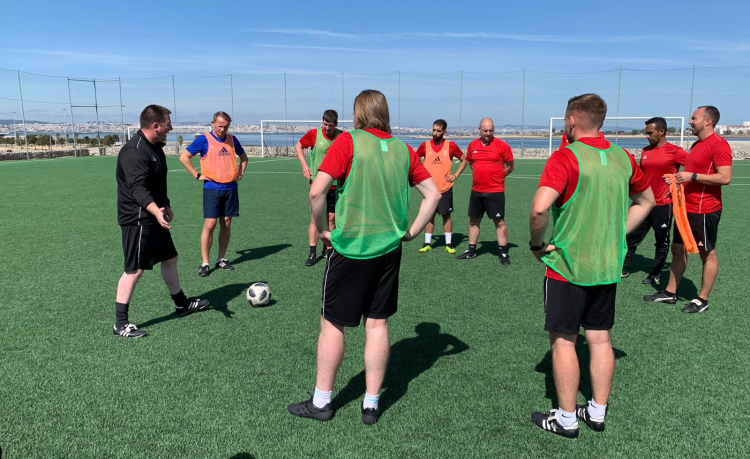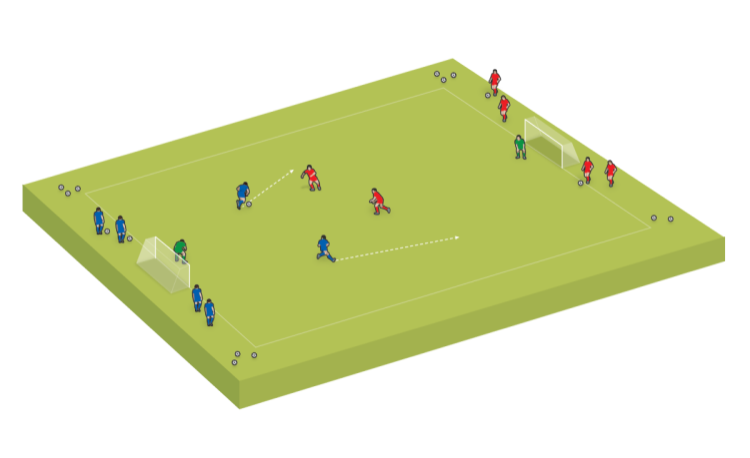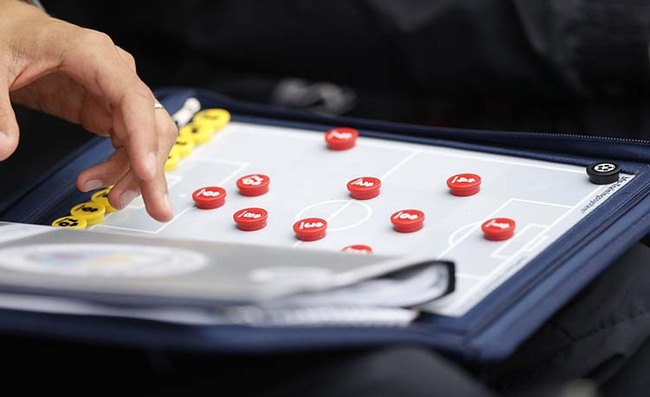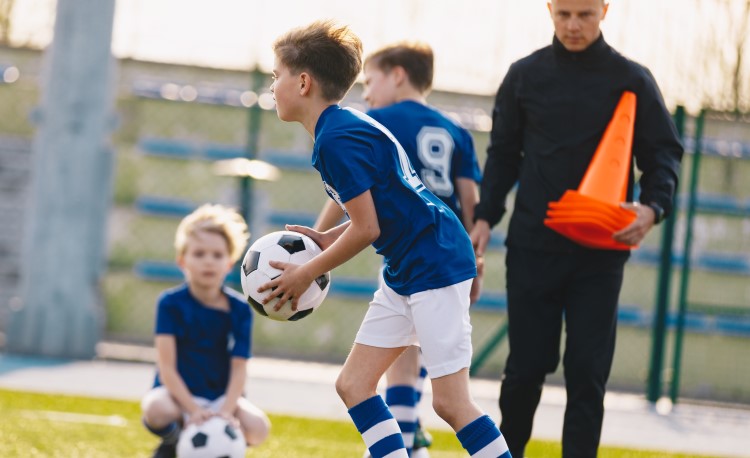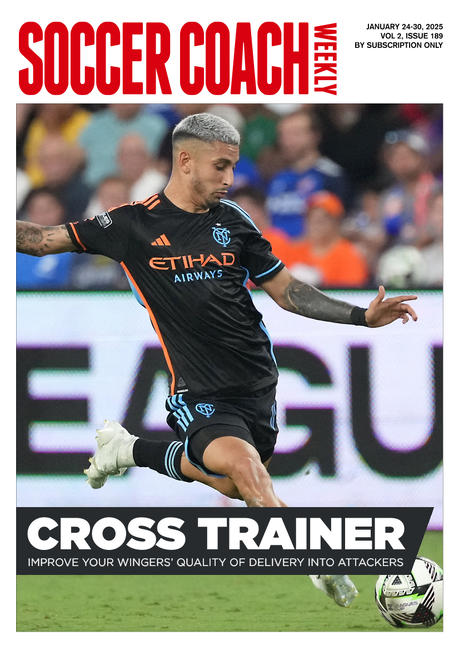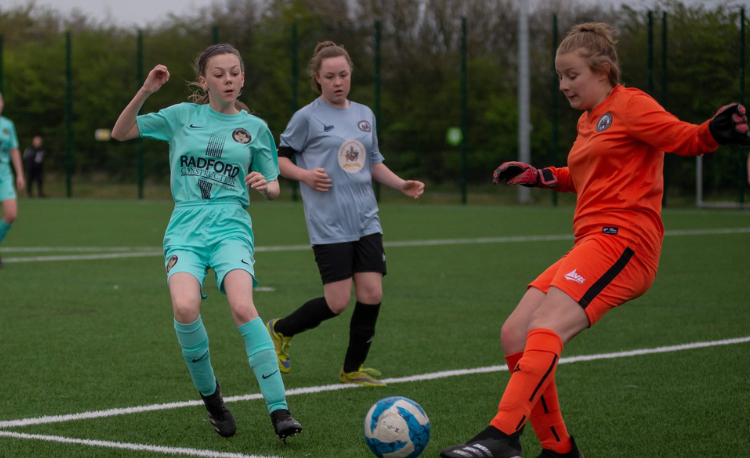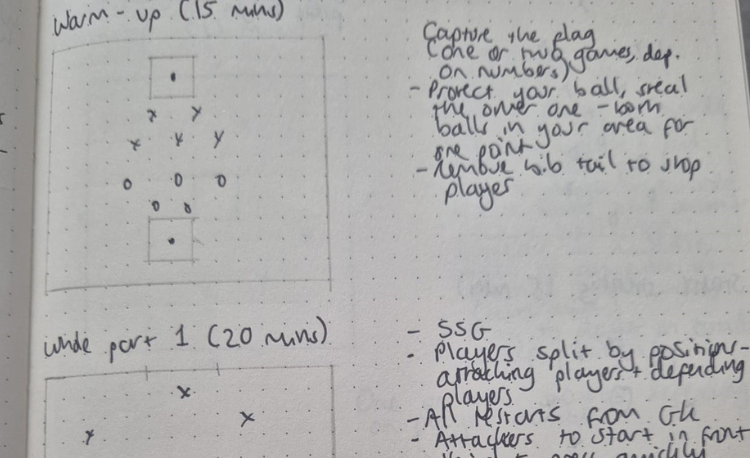How to design flexible sessions
If you have fewer players at training than expected, your plans may have to be ripped up. But, as Carl Wild writes, the solution is designing flexible sessions.
It is not unusual for a coach to be unsure about how many players they will have at training, which can cause frustration and confusion on the day.
When players pull out just before a session is about to start - or they just do not turn up - all planning goes out of the window and the coach has to adapt quickly.
This, in turn, can have a significant impact on the effectiveness of the session. If the coach is busy having to decide on the fly what changes they need to make, it can distract from what should be their main task - helping the players get a handle on the session and its topic.
Therefore, to reduce the impact that having fewer - or sometimes more - players than expected can have on our sessions, we can apply certain strategies within practice design that makes it easier to work with an unknown number of participants.
Using support players and/or target players makes it easier to adapt and continue with a practice, even if fewer players than expected turn up.
The activity shown here (below) is a possession-based practice where teams look to transfer the ball from one target player to the other after completing a set number of passes.
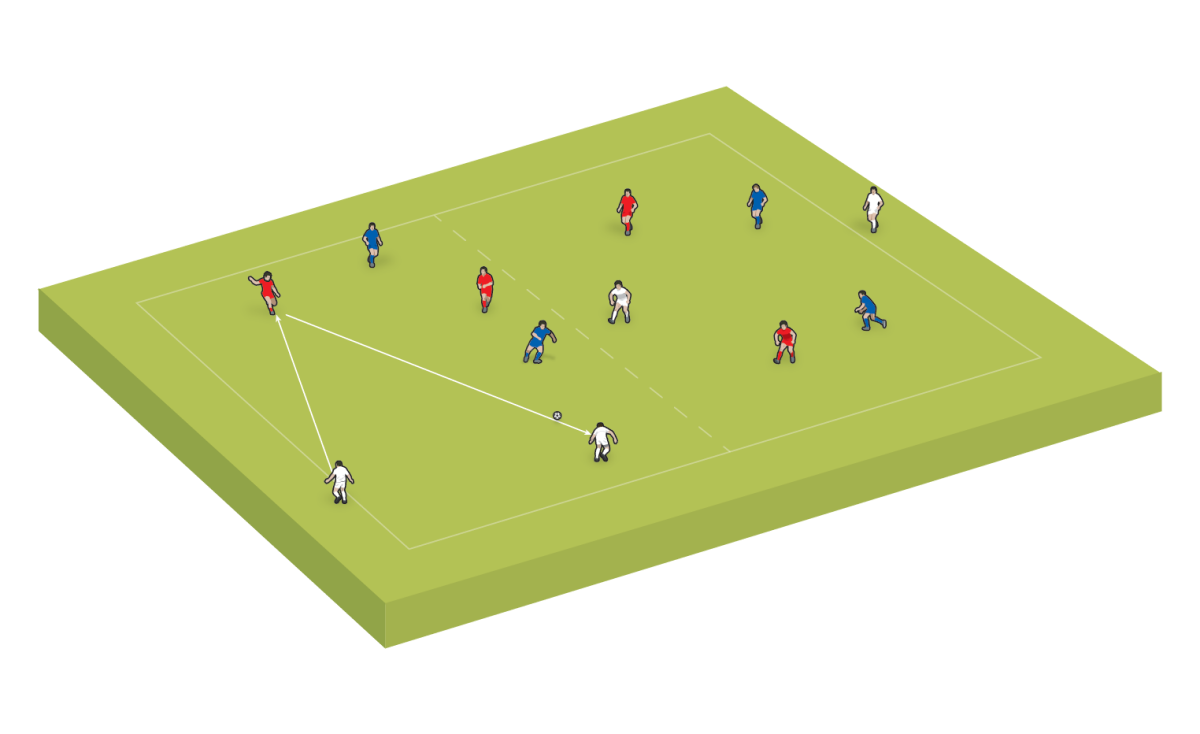
The practice includes two support players, each locked into their designated half of the area.
However, if there is one fewer player than expected, use just the one support player - however, they are unlocked and can travel anywhere within the area. If there are two players missing, the support players can just be removed.
Servers can be used in a similar way, as shown in practice two (below).
Related Files
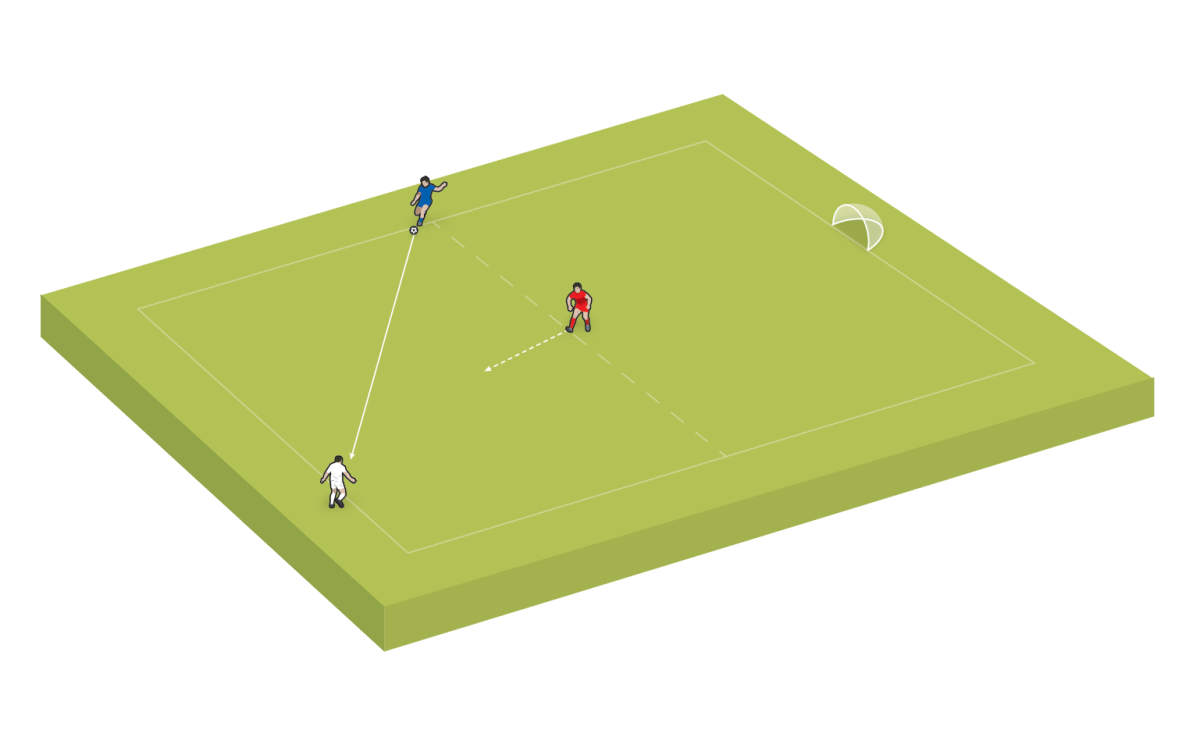
This 1v1 activity begins with a server playing into the attacker. However, it will work just as well with no server and the attacker starting with the ball.
Though the server provides more realism, in that the pass gives the defender a ‘trigger’ to start to close down the attacker, who also needs to consider their first touch, they are not essential to the practice.
As it is likely that a number of these practices will be set-up to accommodate all of the players, some can have servers and some can go ahead without any, depending on how many players turn up.
Though practices that have the players lining up for their turn should be avoided for a number of reasons, practices where they are not fully involved all of the time can still be highly effective. The key is to ensure the players are not waiting around for too long.
Practice three (below) is another 1v1 practice, where the players win a point if they are able to dribble through one of their opponents’ gates.
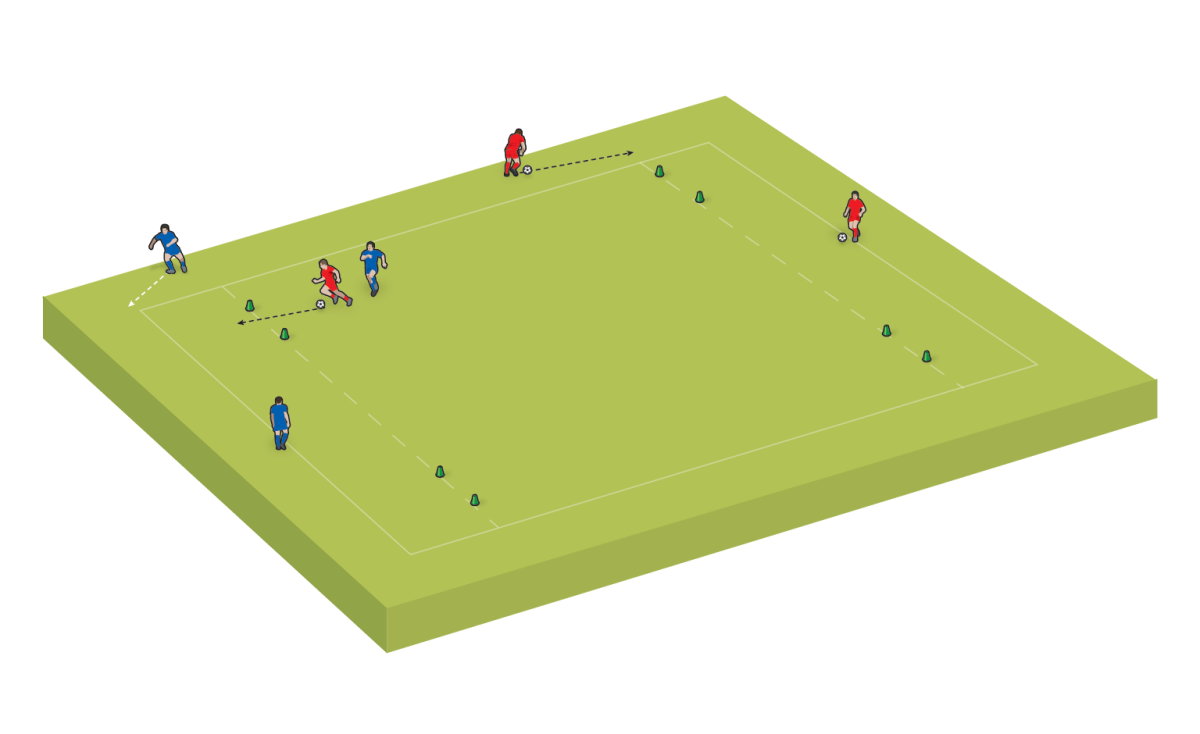
As soon as a game ends, a player wins a point or the ball goes out of play, then two more players enter the pitch and play.
Because of the speed in which a new game starts and the short time the games are likely to last, players will spend very little time waiting to play. By the time they have returned to their start position, if it is not already their turn, it will be before long.
These type of practices can be useful for situations where fewer players than expected turn up, as having one less in the practice than planned will not have any impact.
Though we cannot be expected to only use practices that are easily adaptable in terms of the number of players required, we can use them for those days where we are unsure how many players will show up - or, in specific elements of a session, where the reduced number of players will have the greatest impact.
These type of practices can be helpful for those weeks where we know that any number of players could arrive for training.
For example, if a parent has informed you in advance that they are unsure if they can get their son or daughter to training, or some of the players are ill and it is likely that they will miss training, it can be impossible to predict how many will turn up for your session.
"These practices can be helpful when we know any number of players could arrive..."
In addition to this, we can also use them as the first practice of the training session, as this is when the change in the number of players expected can have the greatest impact.
If we can get the players engaged in one of these practices at the beginning of the session, it can provide us with a bit of time to work out what changes need to be made to the remaining practices.
It could also be that, during this time, the players who are missing then arrive and therefore the rest of the session can go ahead as originally planned.
Having fewer players than expected at training is a common occurrence at all levels of the game.
As well as being frustrating for the coach, it can also impact the players who have turned up for training. The coach may need to switch their focus from supporting the players to adjusting their session.
Plus, the changes they do make could result in the practices not being as effective in terms of helping the players to learn and improve.
Therefore, limiting the impact that reduced number of players can have on a session can only be a good thing, for both you the coach and your players.
Newsletter Sign Up
Coaches Testimonials

Gerald Kearney, Downtown Las Vegas Soccer Club

Paul Butler, Florida, USA

Rick Shields, Springboro, USA

Tony Green, Pierrefonds Titans, Quebec, Canada
Subscribe Today
Discover the simple way to become a more effective, more successful soccer coach
In a recent survey 89% of subscribers said Soccer Coach Weekly makes them more confident, 91% said Soccer Coach Weekly makes them a more effective coach and 93% said Soccer Coach Weekly makes them more inspired.
*includes 3 coaching manuals
Get Weekly Inspiration
All the latest techniques and approaches
Soccer Coach Weekly offers proven and easy to use soccer drills, coaching sessions, practice plans, small-sided games, warm-ups, training tips and advice.
We've been at the cutting edge of soccer coaching since we launched in 2007, creating resources for the grassroots youth coach, following best practice from around the world and insights from the professional game.
